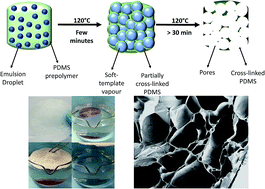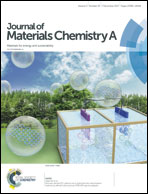An innovative, fast and facile soft-template approach for the fabrication of porous PDMS for oil–water separation†
Abstract
Oil wastewater and spilled oil have caused serious environmental pollution and damage to public health in the past few years. Therefore, considerable efforts are being made to develop sorbent materials that are able to separate oil from water with high selectivity and sorption capacity. However most of them exhibit low reusability, with low volume absorption capacity and poor mechanical properties. Moreover, their synthesis is time-consuming, complex and expensive, limiting their practical application in the case of an emergency. Here we propose an innovative approach for the fabrication of porous PDMS starting from an inverse water-in-silicone procedure able to selectively collect oil from water in a few seconds. The synthesis is dramatically faster than previous approaches, permitting the fabrication of the material in a few minutes independent of the dimensions of the sponges. The porous material possessed a higher volume sorption capacity with respect to other materials already proposed for oil sorption from water and excellent mechanical and reusability properties. This innovative, fast and simple approach can be successful in the case of an emergency, such as an oil spill accident, permitting in situ fabrication of porous absorbents.



 Please wait while we load your content...
Please wait while we load your content...